
Santra
Literature review might appear as a mountain of papers that does not have any definite base, and many students and researchers have a hard time with this aspect of their assignment. Learning “how to write a literature review for a research paper” is essential because it forms the backbone of your study.
Literature review is not a simple summary of the existing research, rather, a literature review will assist you in understanding what researchers have determined, place your research in the light of other works, and in proving the fact of your own competence in the research field.
In this blog, we will discuss tips and tricks on how to find your research question, focus your literature search and how to choose the relevant studies, organization of findings, synthesis of insights and gaps and proper writing and referencing. Through this systematic procedure, you will get to understand how to collect, interpret, and put your sources in an easily readable, brief, and professional way, so that your literature review is effective and meaningful.
A clear research question is the basis of the literature review. Your review will otherwise be disjointed as a haphazard aggregate of studies.
Be precise about what you are going to discuss. An example would be to focus on using Instagram to enhance the self-esteem of teenagers, rather than just social media.
Select the major concepts or variables or other phenomena that you wish to investigate. This is a process that focuses it and aids in filtering irrelevant studies.
Are you targeting adults, teenagers, industry or an area of the country? This option directs the selection of researches and provides the relevancy.
An accurate research question serves as a guide, which simplifies the search of literature and analysis, stating how to write a literature review for a research paper. You also make sure that your review is closely related to the objectives of your study, making it concise and purposeful.
After you have a research question, you should find the relevant studies in the most effective way. A narrowed search will save time lost in searching and it will not be in vain as credible sources will be included.
Google Scholar, JSTOR, PubMed and Scopus are databases that contain peer-reviewed and academic articles.
Narrow down your results as far as the year of publication and peer-reviewed status, expectations and a keyword. Filtering will refine what kind of research you compile and make it the most topical.
Use folders, spreadsheets, or reference managers like Mendeley, Zotero, or EndNote to track your sources. Doing this not only keeps your work structured but also provides a clear record of your search process, ensuring transparency and reproducibility.
This has an aim of not quantity but quality. The process of picking the most relevant studies gives your review more power and therefore your conclusion will be more convincing.
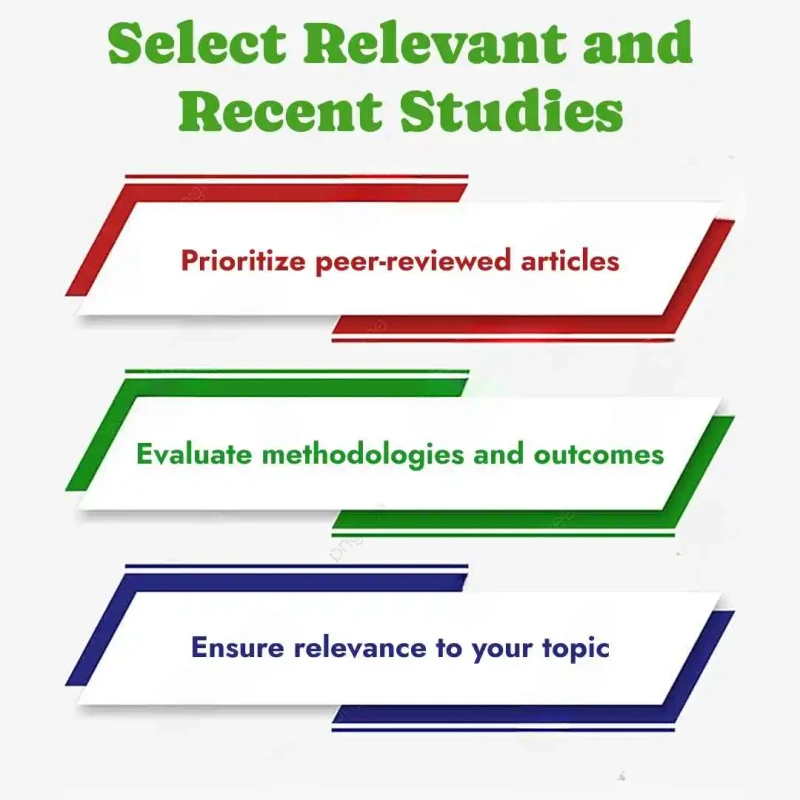
This is not all research that is useful. A credible review requires the selection of the studies which explicitly answer your research question.
Peer-reviewed articles are normally more accurate and highly scrutinized. They signify that the research has undergone expert evaluation, ensuring trustworthiness and academic depth.
Pay attention to articles having a good design, comprehensible findings, and repeatable procedures. Avoid studies with unclear or weak methodologies, as they can compromise the strength of your literature review.
Inclusion of studies relevant to your research. This represents the inclusion of studies that actually answer your research question or prove your hypothesis.
You should avoid including studies that are outdated or irrelevant, as they can dilute your review and obscure key insights. Selecting only pertinent research ensures your review remains focused, credible, and authoritative, which is essential when learning to write a literature review for a research paper. This discriminating approach strengthens your analysis and makes your conclusions more accurate and impactful.
Having gathered pertinent research work, one should organize it systematically. Organization not only makes your argument clear and easily understood to your audience.
Grouping studies according to repetitive themes, topics, or concepts. As an illustration, put all the studies that mention social media influence on mental health together.
Group by research design, e.g. qualitative, quantitative, and mixed-method. The methodological trends and gaps are emphasized using this approach.
Identify similarities, contradictions and trends between studies so as to construct one narrative.
An appropriately organized review will turn a collection of studies into a coherent narrative that will make your understanding of the field very clear.
A literature review is not merely a summary, it is a critical commentary of the subject. Summing up results will show that you understand the results and locate your study in the current literature.
Mark usage of numerous researches. Because spotting shared conclusions helps readers see where the field is heading.
Indicate conflicting results, and discuss some of the reasons why differences might occur. Because pointing out those differences proves you’re not just summarizing, you’re thinking critically about the bigger picture.
Narrate clearly how what you have learned drives your research, in what way your study builds on the previous research.
Synthesis means applying the knowledge of two or more sources synthetically and conceptually and, unlike summarizing, it involves evidence that the knowledge is analytical.
It is important to understand what gaps/research gaps have or have not been addressed in the literature and this will highlight the importance of your study.
Learn about population, situations or variables which are not well studied. By uncovering these areas, you reveal opportunities for fresh insight and innovation.
Point out weaknesses in past studies (small sample or outmoded methods). This helps you establish how your approach can overcome prior shortcomings and add stronger evidence to the field.
Indicate where new studies can help the knowledge. Through such recommendations, you guide future researchers and ensure your review contributes beyond summary or critique.
Accepting gaps will also make your argument stronger and your research a valuable addition to the existing knowledge in the area.
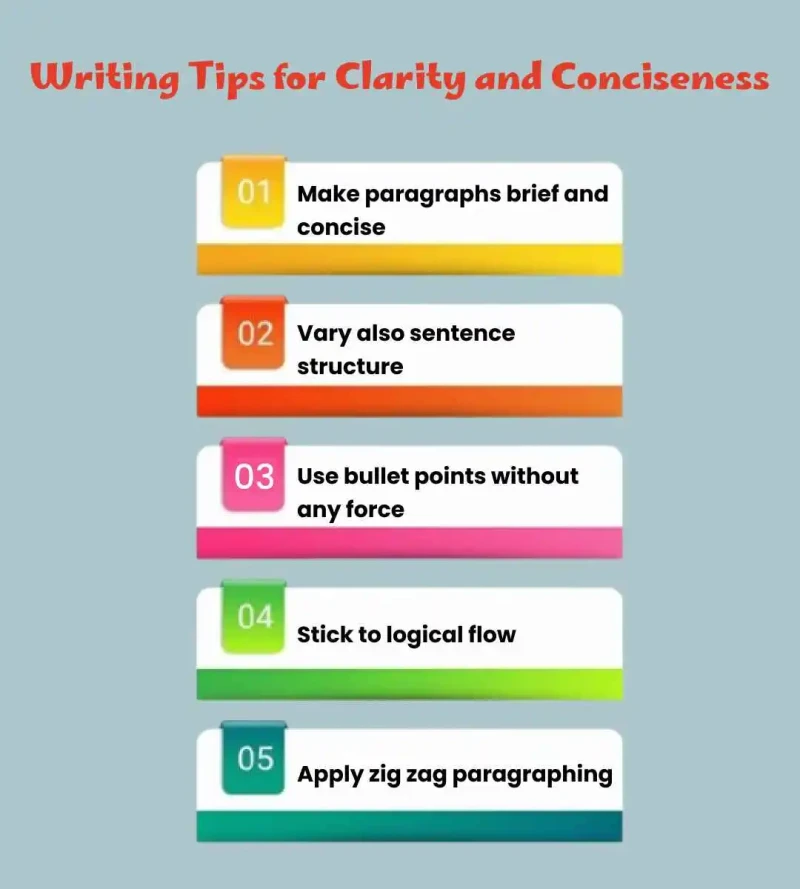
Clear writing is important because your literature review would be easy to read, interesting and professional.
Make paragraphs brief and concise: The paragraph length should be 3-5 lines to ensure attention of the reader.
Vary also sentence structure: Switch between the short sentences and more extensive explanatory ones.
Use bullet points without any force: Do not take too many lists trying to make the text easier to read.
Stick to logical flow: Jump between themes, studies or methods of conducting your review.
Apply zig zag paragraphing: The means that alternate paragraphs adjust to natural patterns of writing and make the work less tiring.
Well detailed writing is readable, and complex analyses become believable and convincing.
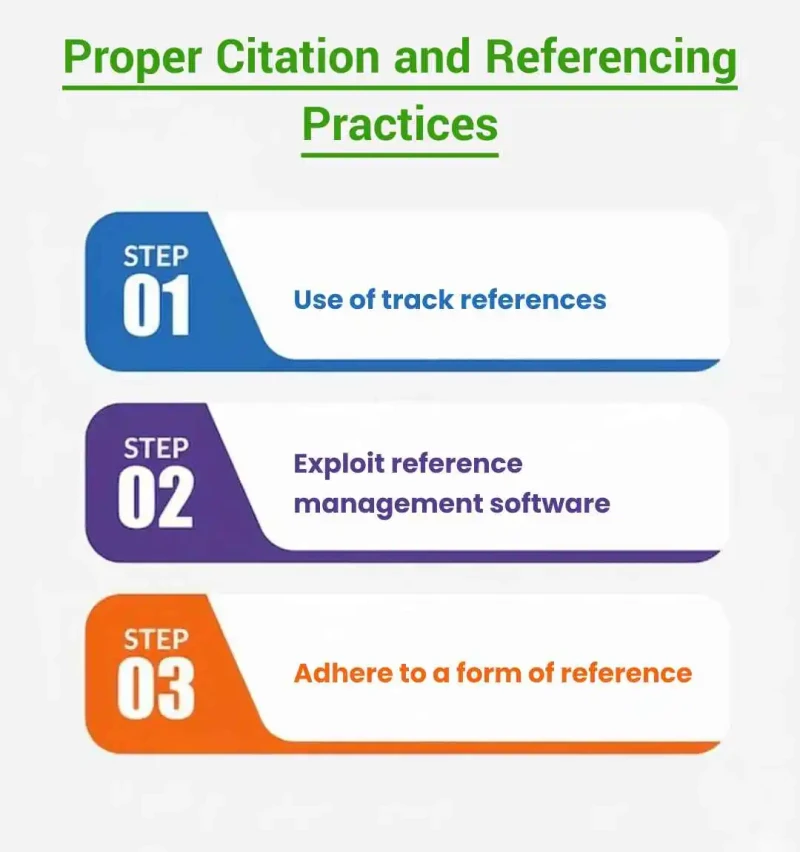
Credibility, academic integrity and prevention of plagiarism require accurate citations.
Use of track references: Document all the citation information during the process of reviewing studies.
Exploit reference management software: References management softwares, such as Zotero, Mendeley, or EndNote, are useful to organize and format the references.
Adhere to a form of reference: Be it APA or MLA, or Chicago, be able to use the same style throughout.
Sometimes referencing is both helpful in getting readers to verify your sources and also makes your arguments stronger, as well as shows scholarly rigor.
The research paper relies on a well-written literature review. It demonstrates your awareness of the prevailing scholarship and the reason why your research is important. Use these 8 steps: define your research question, search specifically to get feasible studies, select your studies, organize information, synthesize, identify gaps, write clearly and your references properly. These steps provide you with a complete, rational, and effective review on how to write a literature review for a research paper.
Take time to plan, be critical and clear in presentation. This does not only uphold your current research but also cuts your sharpness when working in future. A good literature review is an indication of power, knowledge, and professionalism so that your study is an addition that is worthy of your academic line of study. If you need help writing your literature review, contact our PhD Assistance.

How to Write a Synopsis for a Thesis: A Complete Writing Framework

Top 5 Best Literature Review Writing Service for PhD Scholars
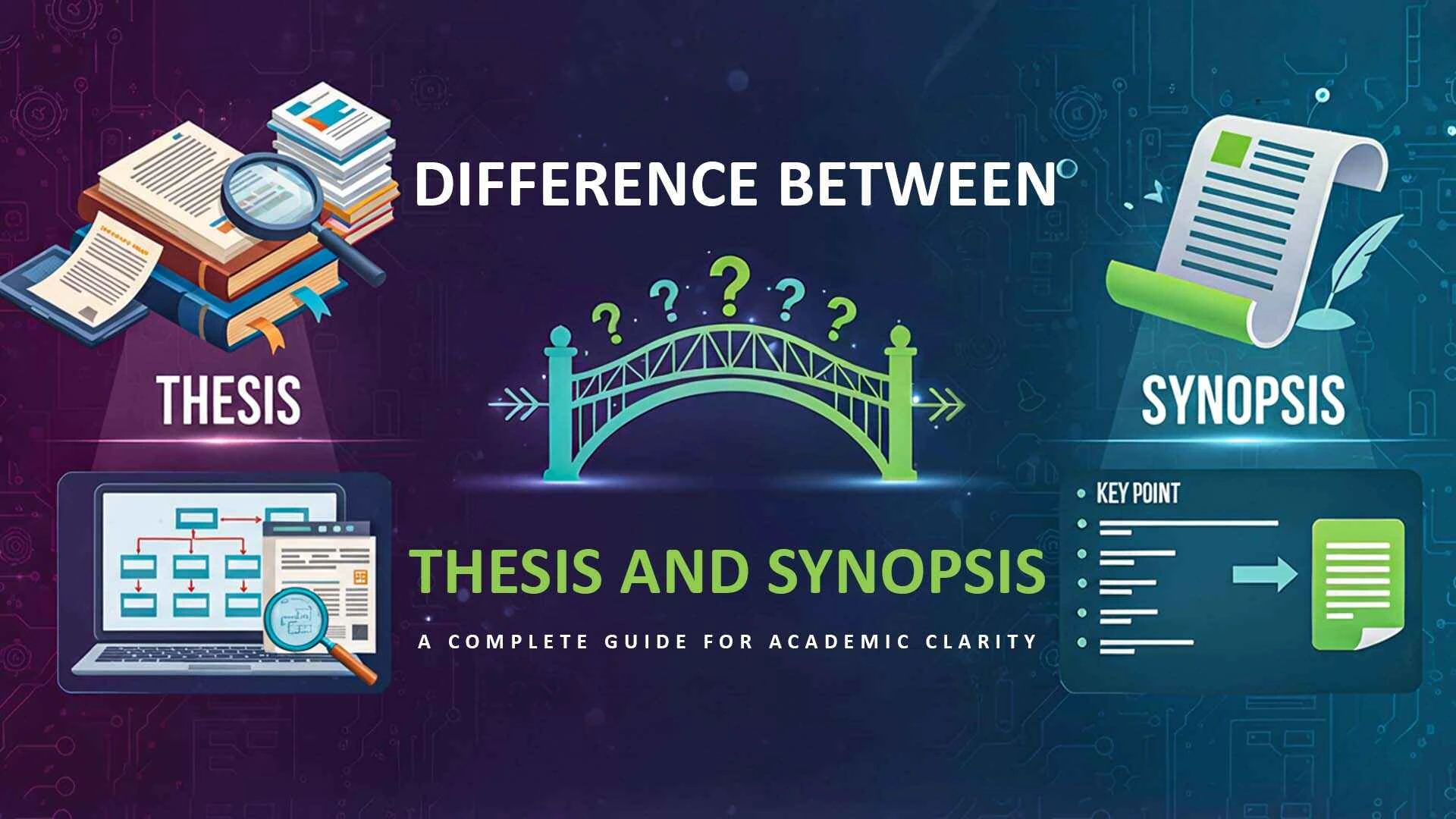
Difference Between Thesis and Synopsis: A Complete Guide for Academic Clarity

Types of Literature Review Comprehensive Guide for Scholars
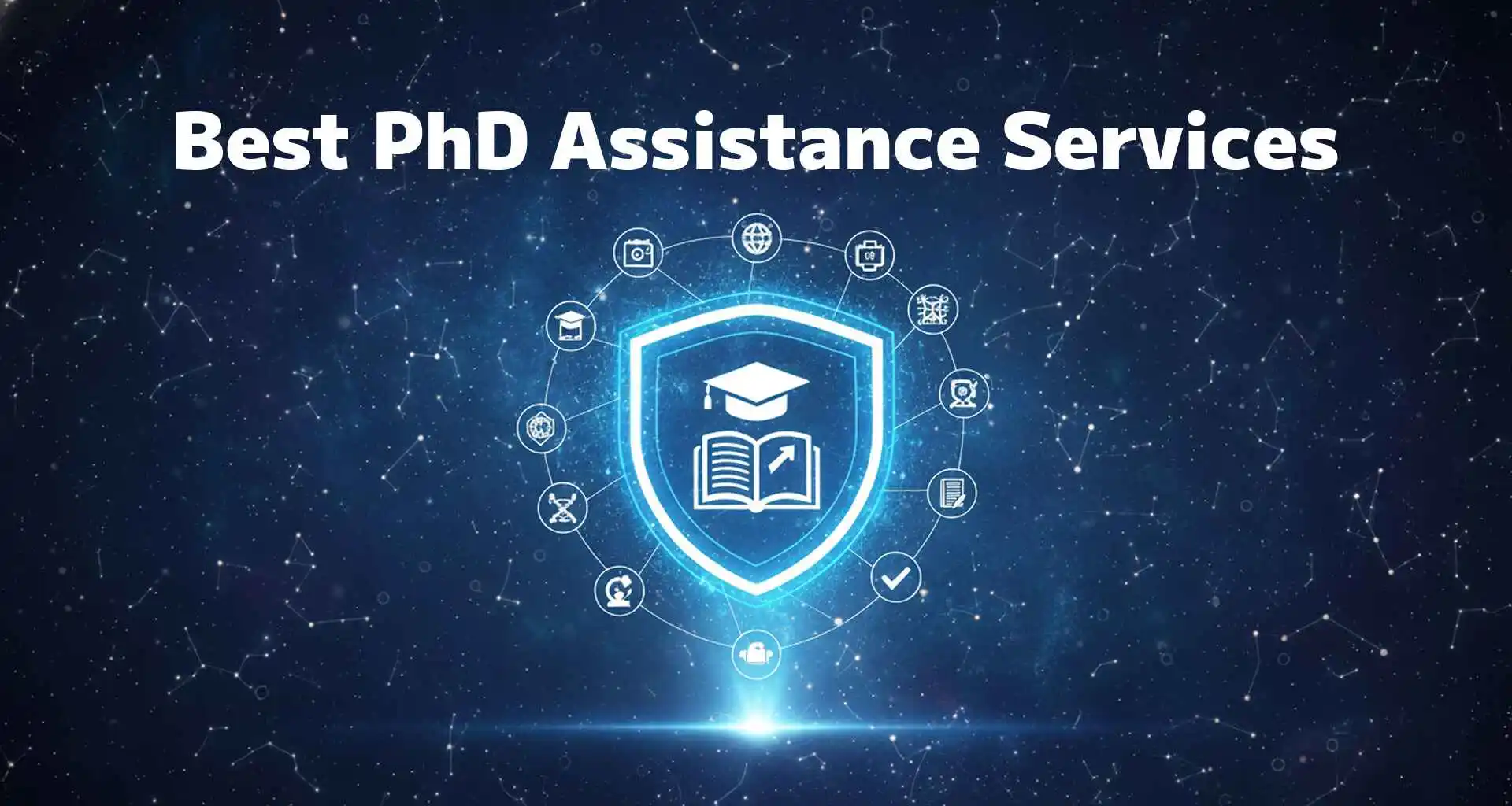
Best PhD Assistance Services